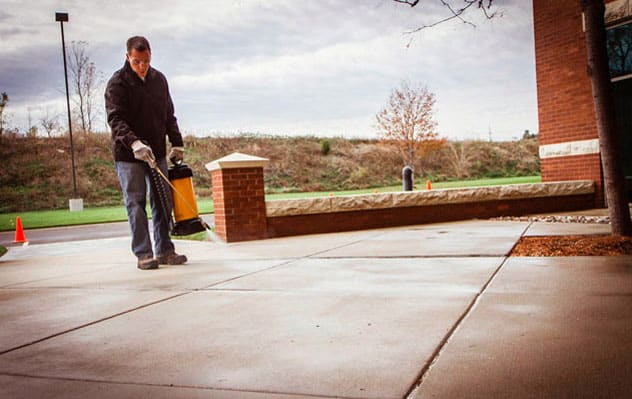
Top 5 things you need to know about weatherproofing concrete (and other masonry surfaces) for winter
1. Don’t wait until winter to winterize.
The ideal time to prepare and protect your driveways, sidewalks, parking lots and other masonry surfaces from the effects of winter is late summer to early fall. That’s because Saltguard, Saltguard VOC, Saltguard WB, our penetrating water and salt barriers, need to be applied during warm and dry conditions with ample time to cure.
2. Weatherproofing concrete and masonry surfaces saves money in the long-term!
A little weatherproofing today is much more cost-effective than repairing damaged, unprotected concrete in just a few years. Left untreated, water and salt can penetrate in to concrete and lead to costly damage such as rust, spalling, buckling and other serious problems.
3. Vertical surfaces need weather protection too.
Saltguard and Saltguard WB work wonders for driveways, bridges, sidewalks, streets, parking lots and other horizontal surfaces, but they also are commonly (and effectively) used to protect the sides of parking garages, brick walls and vertical block surfaces. Water, ice and all the contaminants that are carried with them in the winter can splash up on vertical surfaces too.
4. Surfaces need to be cleaned prior to being protected with Saltguard or Saltguard WB.
We recommend using Cleaner/Degreaser to remove general grime, and Oil & Grease Stain Remover for more deeply-set stains. This will maximize the performance of Saltguard and Saltguard WB. Here’s a quick how-to video for using Oil & Grease Stain Remover.
5. Here’s an easy trick to find out whether a surface has already been protected with a water repellent.
Just pour a little water out of a small container onto the surface. If the water beads up and puddles on the surface, it’s already been treated at some point. If it wets out and soaks into the surface, you’ve got an excellent candidate for Saltguard or Saltguard WB on your hands.


